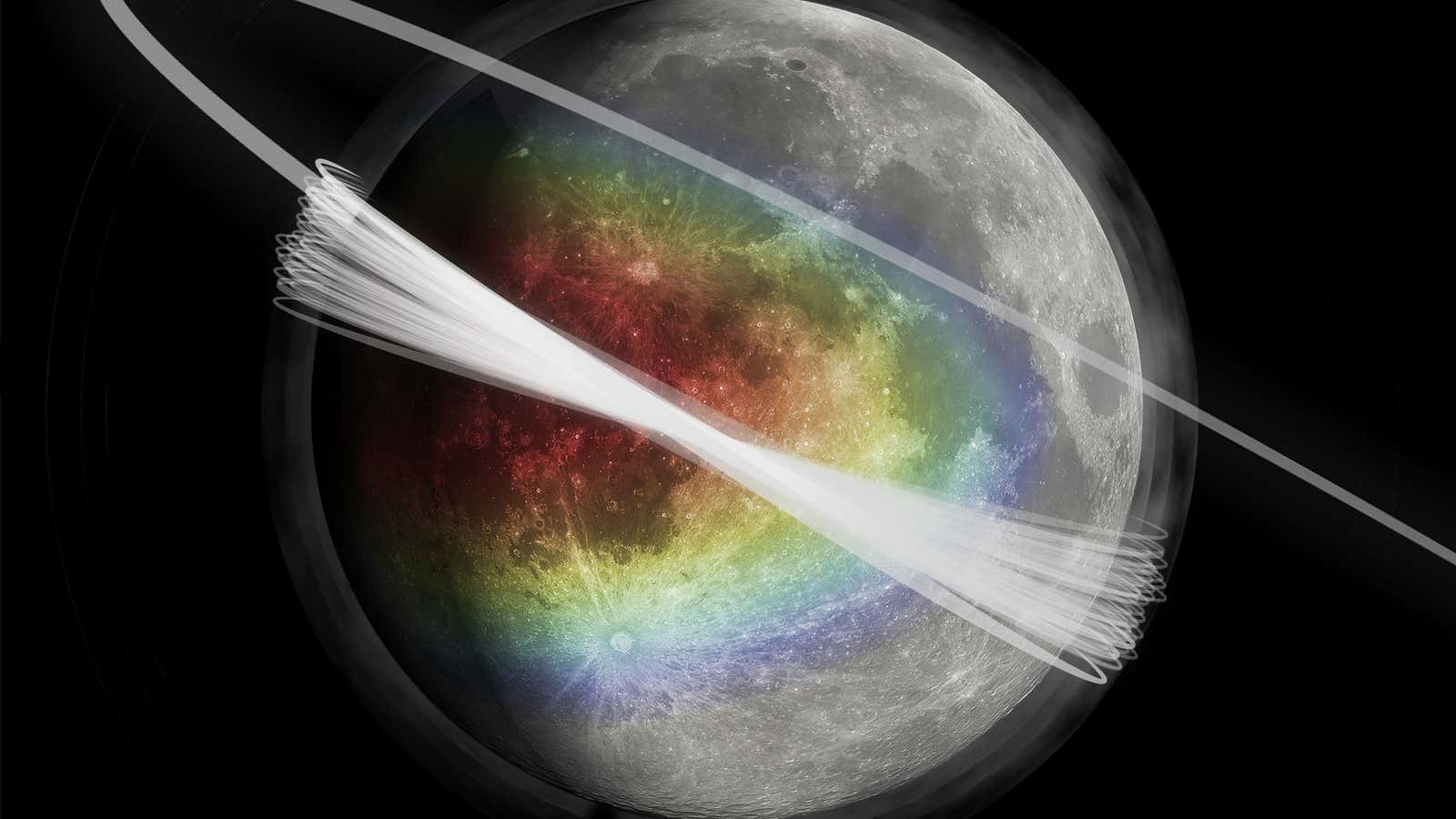The moon may be a lot dustier than we previously thought. Scientists from the University of Colorado-Boulder have found evidence (paywall) of a permanent dust cloud surrounding the moon as a result of thousands of tiny collisions of comet dust particles with the moon’s surface.
The data were gathered using a spacecraft called the Lunar Atmosphere and Dust Environment Explore (LADEE) that was launched in September 2013. In orbit around the moon, LADEE recorded 140,000 impacts from dust on surface over 80 days. The signal of these incoming dust particles were moving so fast, the research team determined that they were coming from comets.
The news doesn’t bode well for space travel.
“We’re really talking about very small particles,” lead author Mihaly Horányi told Quartz, “I think there is a concern about the long-duration exposure to dust impacts, and what happens with mirrors and mechanical devices [in space].” He compared it to sand-blasting different surfaces that are exposed in space. So far, astronauts have only spent a few days in space, but this dust may impact astronauts who wish to make a trip up to the moon for a longer stay.
Interplanetary dust is nothing new: Every day, the earth receives 100 tons of cosmic dust. The moon, with a smaller surface area than the earth, gets about 5 tons of cosmic dust.
The earth has an atmosphere to block it from this dust shower, but the moon does not. As a result, all of these tiny dust particles—only about 100 microns, or 0.1 mm—hit the moon’s surface at about 45,000 mph. Like when a meteorite hits a planet and displaces bits of the ground, the same thing happens on the surface of the moon, on a much smaller scale.
“It’s like a plume, or a little explosion,” he told Quartz.
These little moon particles don’t actually make it into the moon’s orbit. Instead, they shoot into the area above the surface—up to 250km, or 155 miles—and then fall back down. Because the moon is constantly being bombarded by such dust from comets, Horányi thinks the cloud of moon dust it generates will likely be around the moon forever. Other rocky interstellar objects with thin or negligible atmosphere, such as Mercury or Mars, or it’s moons, Phobos and Deimos, may also have similar dust clouds.




